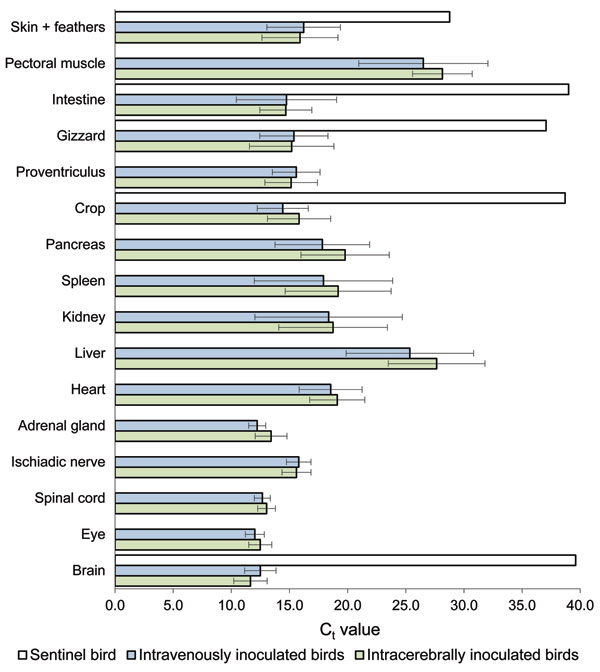Volume 18, Number 2—February 2012
Research
Pathogenesis of Avian Bornavirus in Experimentally Infected Cockatiels
Figure 4

Figure 4. Detection of avian bornavirus (ABV) RNA in different tissues from cockatiels that had been intracerebrally or intravenously inoculated with ABV and from a noninoculated sentinel bird. The geometric mean cycle thresholds (Ct) are shown with their respective standard deviations. Ct >36.0 is considered negative. Low Ct, implying high amounts of ABV RNA, was detected in neuronal and gastrointestinal tissue.
Page created: January 17, 2012
Page updated: January 17, 2012
Page reviewed: January 17, 2012
The conclusions, findings, and opinions expressed by authors contributing to this journal do not necessarily reflect the official position of the U.S. Department of Health and Human Services, the Public Health Service, the Centers for Disease Control and Prevention, or the authors' affiliated institutions. Use of trade names is for identification only and does not imply endorsement by any of the groups named above.